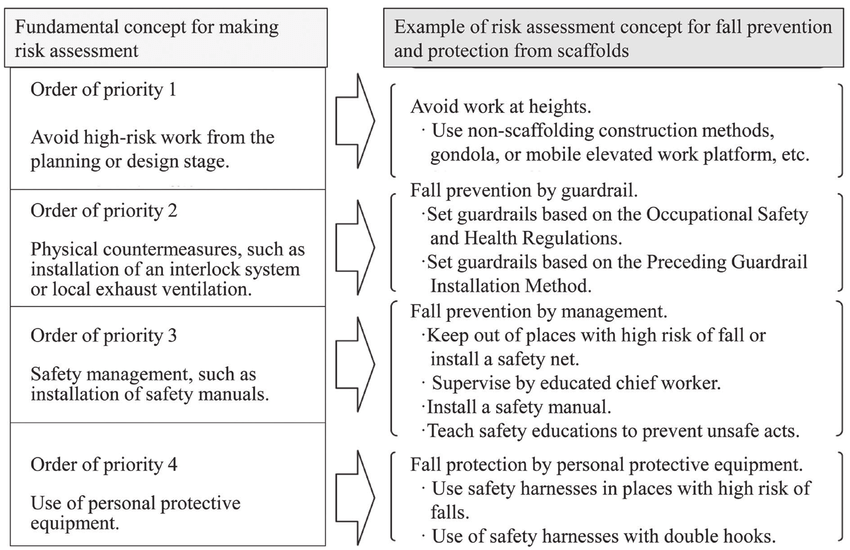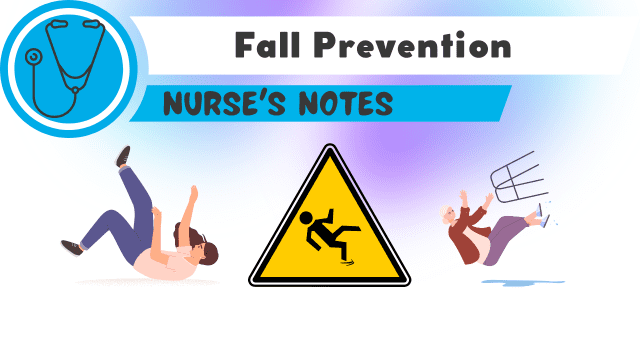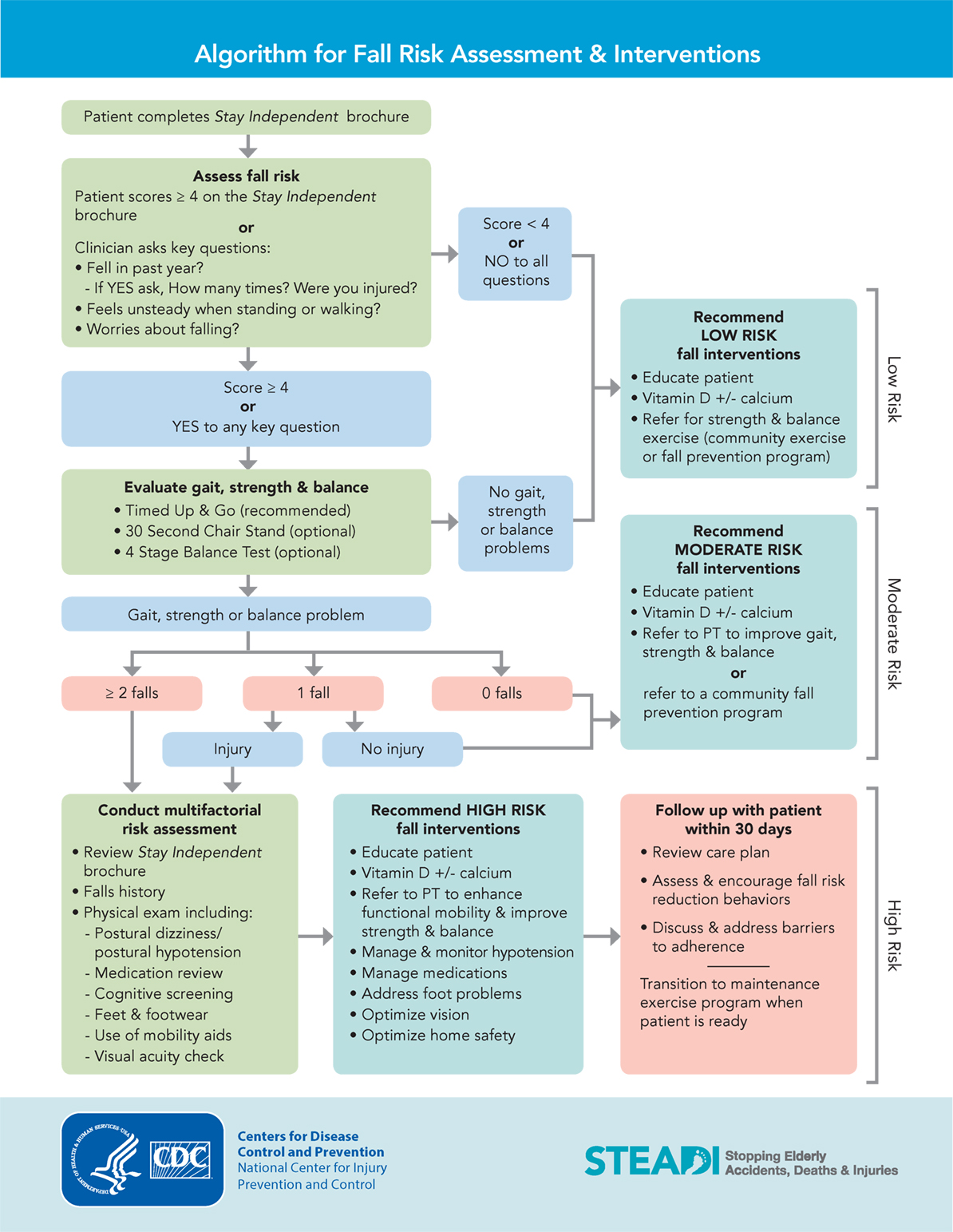Facts About Dementia Fall Risk Revealed
Facts About Dementia Fall Risk Revealed
Blog Article
Getting The Dementia Fall Risk To Work
Table of ContentsThe Only Guide for Dementia Fall RiskWhat Does Dementia Fall Risk Mean?The smart Trick of Dementia Fall Risk That Nobody is DiscussingGet This Report on Dementia Fall RiskAll About Dementia Fall Risk
The FRAT has 3 sections: drop threat standing, threat variable list, and action plan. A Fall Threat Standing consists of data about background of current falls, medications, psychological and cognitive condition of the individual - Dementia Fall Risk.If the patient ratings on a danger factor, the corresponding number of factors are counted to the client's fall threat rating in the box to the far. If a client's loss danger rating completes 5 or higher, the individual is at high threat for drops. If the person ratings only 4 points or reduced, they are still at some danger of falling, and the registered nurse must use their ideal professional analysis to manage all loss danger factors as component of an alternative care strategy.
These common approaches, in general, assist create a risk-free setting that minimizes unintended drops and delineates core preventative steps for all individuals. Indicators are vital for patients at risk for falls.
Some Known Factual Statements About Dementia Fall Risk
Wristbands need to consist of the client's last and initial name, day of birth, and NHS number in the UK. Just red color needs to be utilized to signal special patient condition.
Items that are as well far might need the patient to connect or ambulate unnecessarily and can possibly be a risk or add to falls. Helps protect against the client from heading out of bed without any type of aid. Registered nurses respond to fallers' call lights faster than they do to lights started by non-fallers.
Aesthetic disability can greatly trigger drops. Hip pads, when worn properly, may decrease a hip crack when fall occurs. Maintaining the beds closer to the floor reduces the danger of drops and serious injury. Putting the cushion on the flooring considerably minimizes loss risk in some health care settings. Reduced beds are designed to minimize the range a patient falls after relocating out of bed.
The Definitive Guide to Dementia Fall Risk
Individuals who are tall and with weak leg muscles that attempt to rest on the bed from a standing position are likely to drop onto the bed due to the fact that it's as well low for them to decrease themselves securely. Likewise, if a tall person attempts to get up from a reduced bed without support, the client is likely to drop back down onto the bed or miss the bed and drop onto the floor.
They're designed to advertise prompt imp source rescue, not to avoid falls from bed. Distinct alarms can likewise advise the individual not to get up alone. The use of alarm systems can likewise be a substitute for physical restraints. Aside from bed alarm systems, enhanced supervision for risky individuals also might assist avoid falls.

People with a shuffling stride boost fall possibilities substantially. To reduce fall threat, shoes should be with a little to no heel, thin soles with slip-resistant step, and support the ankle joints. Encourage patient to make use of nonskid socks to stop the feet from moving upon standing. Urge individuals to wear proper, well-fitting shoesnot nonskid socks for motion.
Fascination About Dementia Fall Risk
People, especially older grownups, have minimized aesthetic capacity. Lighting an unfamiliar atmosphere helps boost presence if the person must rise at evening. In a study, homes with adequate lighting report fewer drops (Ramulu et al., 2021). Enhancement in illumination in your home might minimize autumn rates in older adults (Dementia Fall Risk). The use of stride belts by all health care service providers can advertise security when helping clients with transfers from bed to chair.

Caretakers work for guaranteeing a secure, safeguarded, and risk-free environment. Research studies showed really low-certainty evidence that sitters lower autumn threat in severe treatment healthcare facilities and just moderate-certainty that choices like video surveillance can decrease caretaker use without raising fall danger, suggesting that caretakers are not as useful as at first thought (Greely et al., 2020).
The Definitive Guide for Dementia Fall Risk

Boosted physical fitness reduces the danger for drops and restricts injury that is suffered when autumn takes place. Land and water-based workout programs might be similarly helpful on balance and stride and therefore decrease the danger for drops. Water workout might add a favorable benefit on balance and gait for ladies 65 years and older.
Chair Increase Workout is a basic sit-to-stand exercise that helps enhance the muscle mass in the upper legs and butts and boosts wheelchair and freedom. The read more objective is to do Chair Rise exercises without using hands as the client ends up being more powerful. See resources section for an in-depth guideline on just how to execute Chair Surge exercise.
Report this page